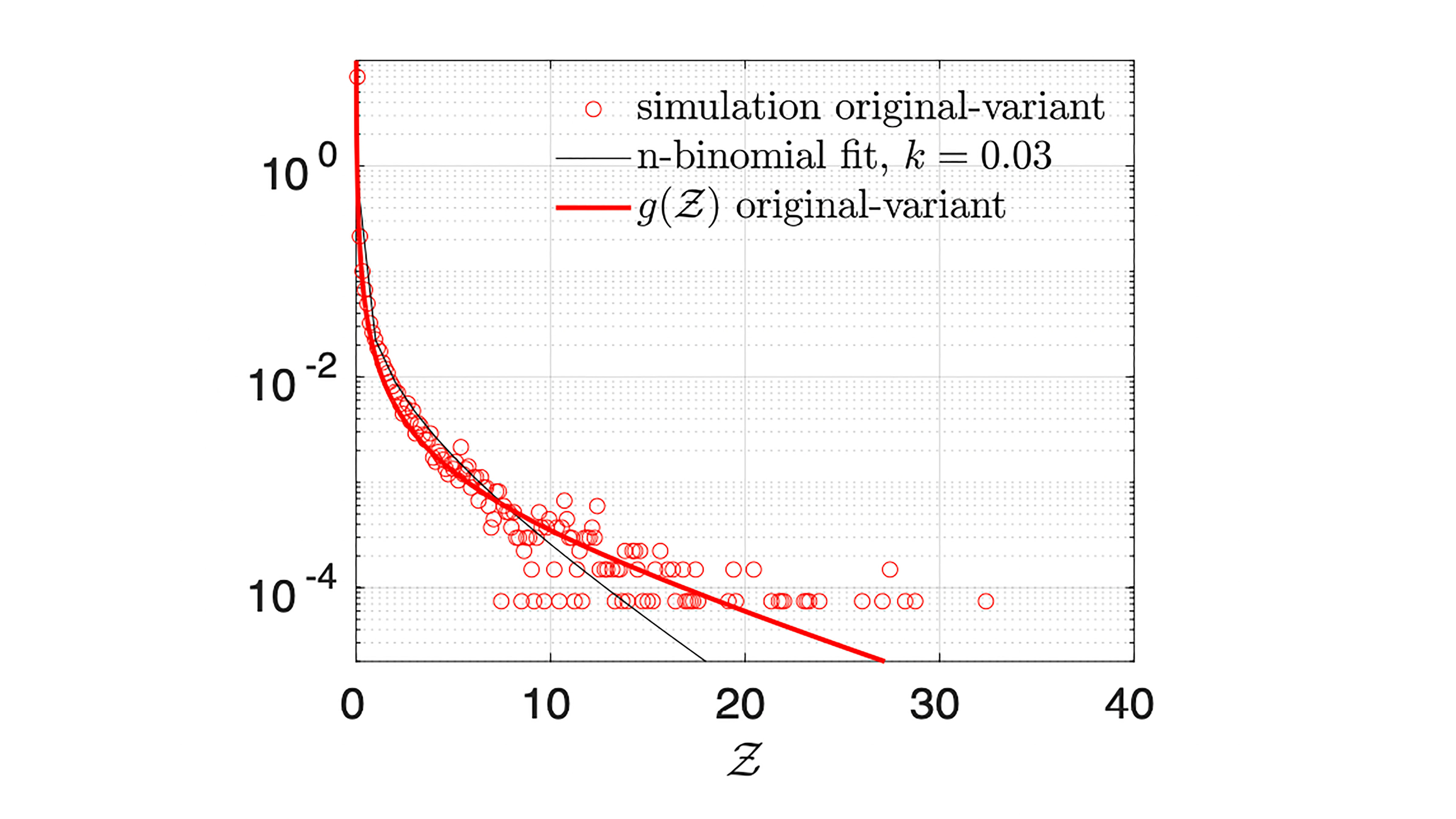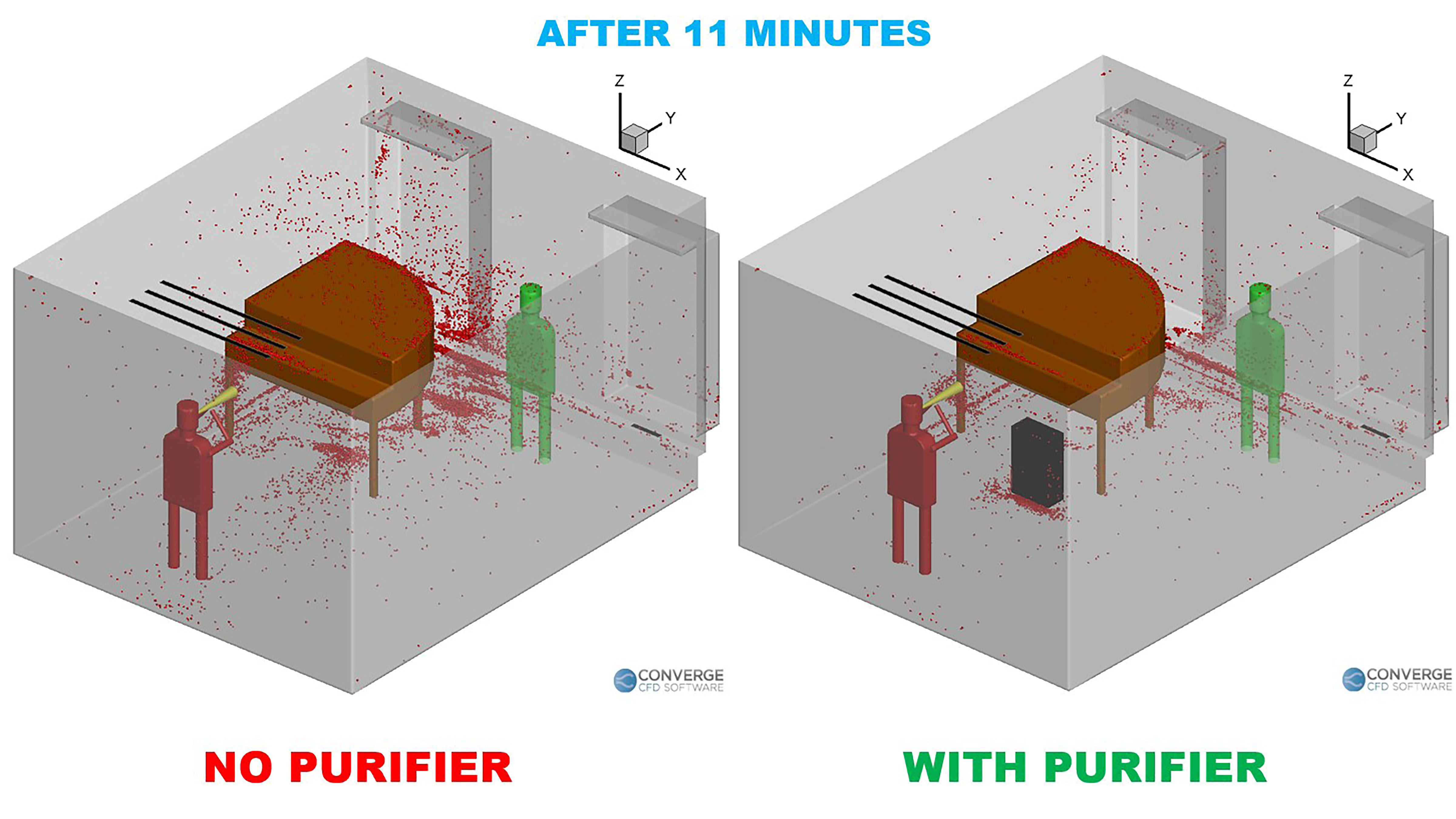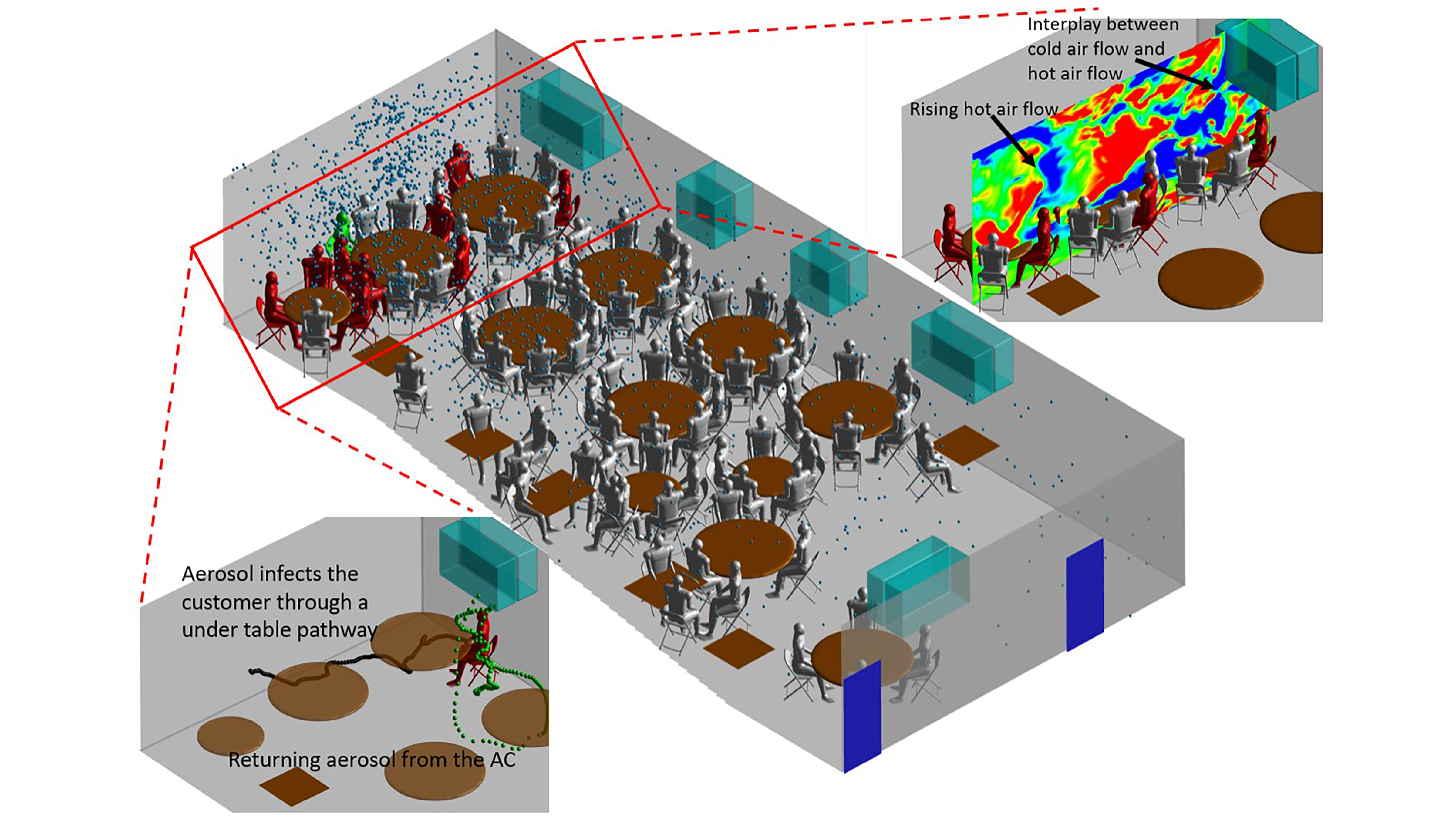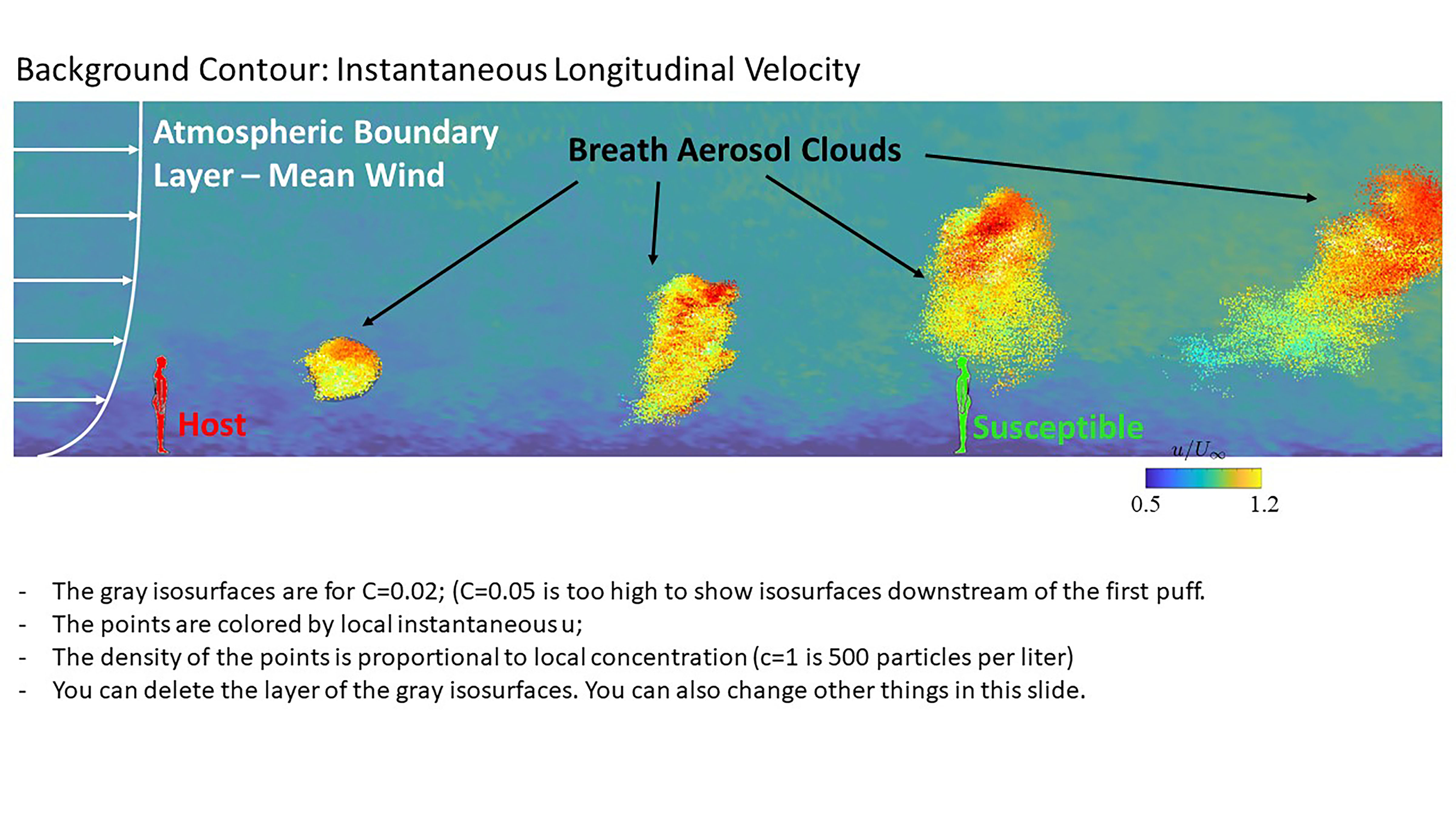In Physics of Fluids, researchers create a model to connect what biologists have learned about COVID-19 superspreading with how such events have occurred in the real world. They use occupancy data to test several features ranging from viral loads to the occupancy and ventilation of social contact settings. They found that 80% of infections occurring at superspreading events arose from only 4% of those who were carrying the virus into the event. The top feature driving the wide variability in superspreading events was the number of viral particles found in index cases.



